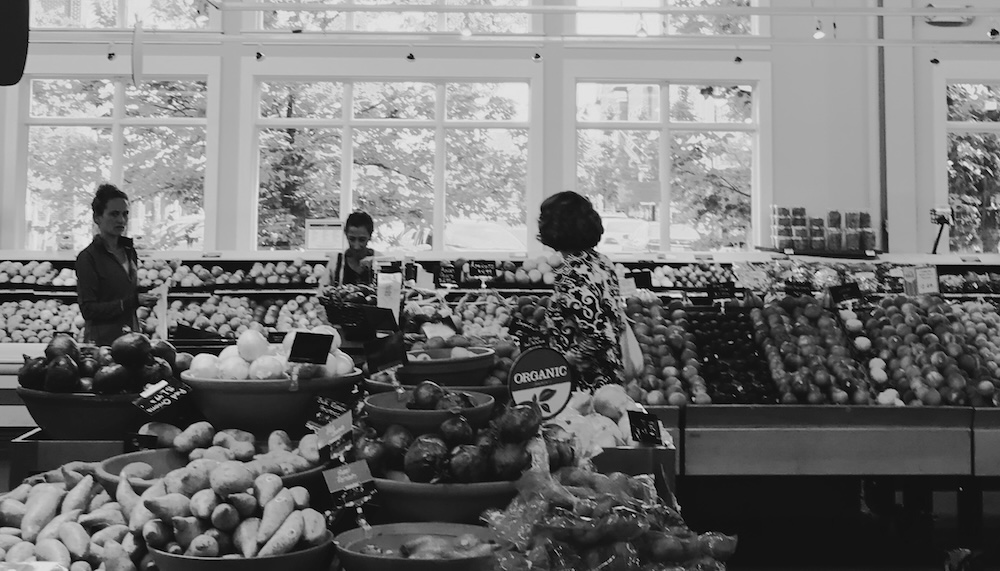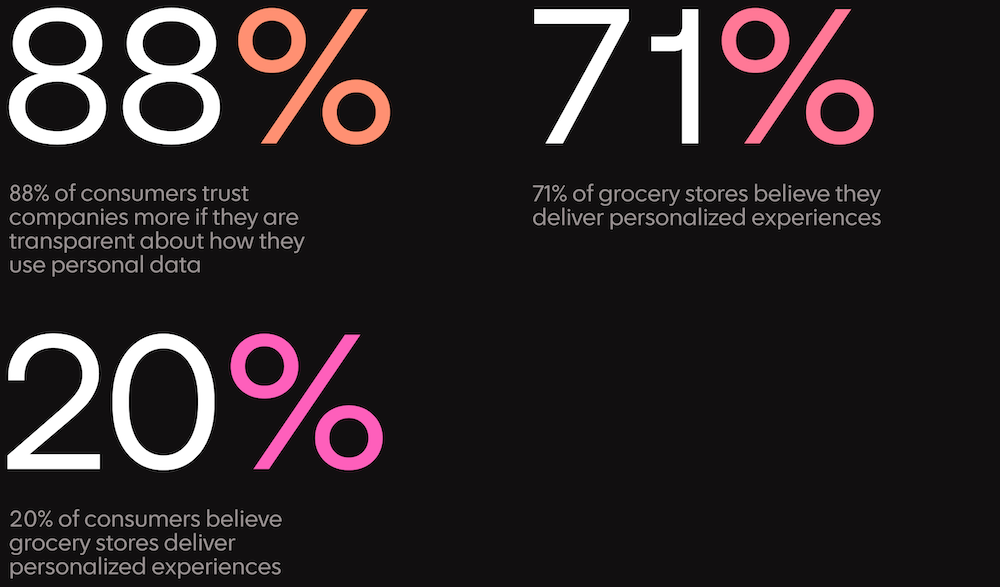From Aisles to Algorithms
Unpacking the Latest Loyalty Shifts in the Grocery Sector

Every American, regardless of background or circumstance, interacts with supermarkets. These establishments, whether around the corner or a click away, provide essential products for our survival and well-being. With a marketplace full of minor yet regular purchases, the importance of loyalty programs in retaining customers is undeniable. Although many grocery stores seem to follow the same playbook, the success of their loyalty programs can vary significantly.
This white paper delves into the challenges and solutions of loyalty programs in the grocery sector. It draws from academic papers, industry articles, and a comparative analysis of national grocery chains. The findings suggest that the key to customer retention lies in personalized shopping experiences that resonate with individual preferences, desires, and past purchasing behaviors. Moreover, as technology continues to advance, grocery stores need to align with digital trends, offering a seamless online and offline shopping experience.
Building Trust and Bridging the Online-Offline Divide
Hyper-personalization is the path to successful customer loyalty. In an age where 88% of consumers trust companies more if they are transparent about how they use personal data, personalization emerges as the critical factor influencing loyalty. Leveraging data allows stores to offer tailored experiences, fostering loyalty. Consumers shop three times more frequently at stores that provide personalized experiences. However, while 71% of grocery stores believe they deliver personalized experiences, only 20% of customers agree. Leading brands have embraced precision-targeting, utilizing data to segment their audience. As technology evolves, real-time data, artificial intelligence, and facial recognition will play a role in personalization.
The modern shopper navigates seamlessly between online and offline worlds. Grocery stores need to recognize and cater to this omnichannel shopper. The integration of online and offline data provides rich insights, allowing stores to offer timely promotions. Communication channels matter: knowing where your audience spends time can make or break a promotion.

The Transformative Impact of Tiered Loyalty Programs
Tiered loyalty programs have emerged as a successful strategy, encouraging customers to spend more and advocate for the brand. They are changing the game. Recognizing that 62% of loyal customers will purchase more due to a personalized offer, these programs offer varying incentives based on spending. As customers climb the loyalty ladder, they are less likely to switch to competitors. Major grocery chains have incorporated premium loyalty tiers, providing various incentives to encourage spending.

Customer Behavior and Insights
COVID-19 has reshaped the grocery sector. Brands that once focused on brick-and-mortar are rethinking their strategies as online sales soar. The pandemic has propelled online grocery shopping to unprecedented heights. From 81% of consumers never having shopped for groceries online in 2019, the number skyrocketed to 79% that have during the pandemic.
Understanding customer behavior is paramount. Over the past five years, significant shifts have occurred, especially among millennials. From 14% opting for online grocery shopping, the number has now more than doubled. Despite the proliferation of loyalty programs, a massive opportunity exists. Most consumers are open to joining premium loyalty programs if they see value. Customers value data privacy, and brands that assure this will have an edge.

Technological Trends in the Grocery Sector
The grocery industry has been at the forefront of technological transformation over the past two decades. As the digital age progressed, grocery stores have evolved from mere brick-and-mortar establishments to technologically advanced hubs of convenience and personalized shopping.
Automated cart curation is one of the latest marvels. By leveraging artificial intelligence and predictive analytics, grocery stores can now anticipate a shopper's needs and automatically generate shopping lists based on their purchase history and preferences. This not only streamlines the shopping process but also ensures that customers don't forget any essential items.
Dynamic in-store vouchering is another innovation that stands out. With the integration of real-time data analytics, customers can receive personalized vouchers and discounts as they navigate through the store aisles. These on-the-spot offers are tailored based on the products they pick up or even just glance at, enhancing the chances of upselling and cross-selling.
Gamification has also made its mark in the grocery sector. By turning mundane shopping tasks into engaging challenges or games, grocery stores can motivate customers to explore new products, spend more, and even share their experiences on social media. From earning points for trying out a new product to participating in store-wide scavenger hunts, gamification brings a fresh and fun dimension to grocery shopping.
Despite these advancements, there remains untapped potential in leveraging technology for loyalty programs in the grocery sector. As the stat suggests, a whopping 45% of consumers are willing to pay a premium for products tailored to their individual tastes. This underscores the need for grocery chains to further invest in technological solutions that enhance personalization and cater to the evolving needs and preferences of modern shoppers. In the coming years, we can anticipate even more innovative technological trends that will continue to redefine the grocery shopping experience.

Charting the Future of the Grocery Sector
In the ever-evolving landscape of the grocery industry, the importance of loyalty programs has never been more pronounced. As consumer behaviors shift and expectations rise, the traditional approaches to customer engagement no longer suffice. In essence, the future of the grocery sector hinges on a triad of elements: hyper-personalization, omnichannel strategies, and technological integration. Brands that master this trifecta will not only emerge as industry leaders but will also shape the future trajectory of grocery shopping. As we look ahead, it's clear that the grocery sector is on the cusp of a transformative era, and only those that adapt, innovate, and evolve will stand tall in this dynamic landscape.
To view the full list of references, click here
Thank you for your interest in our paper. Happy reading!